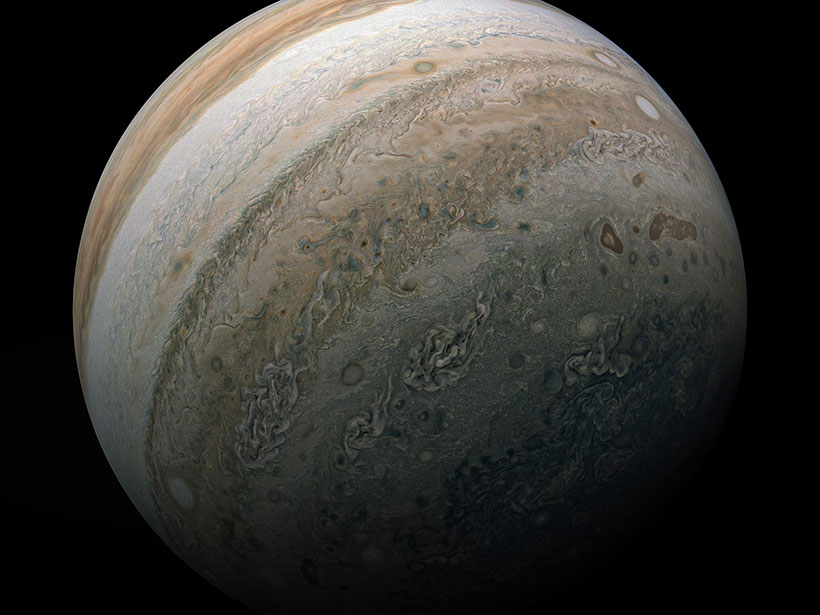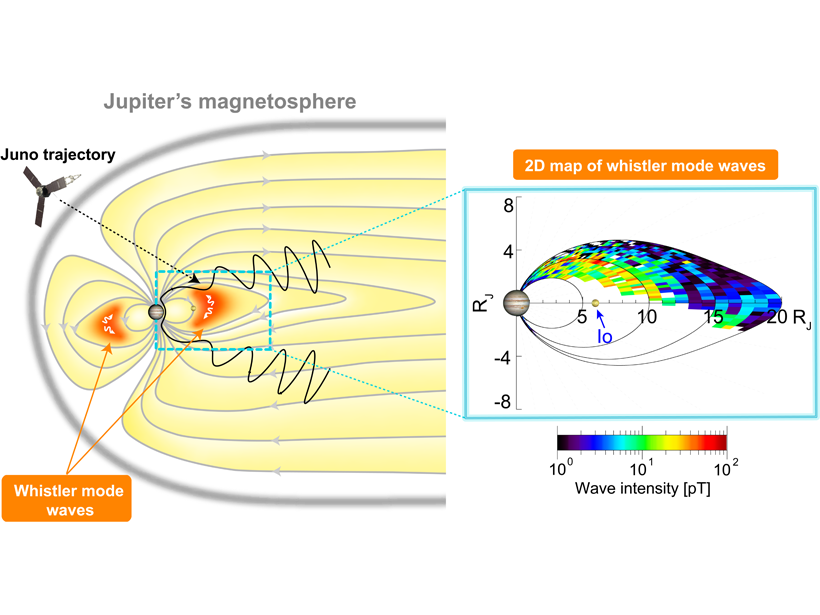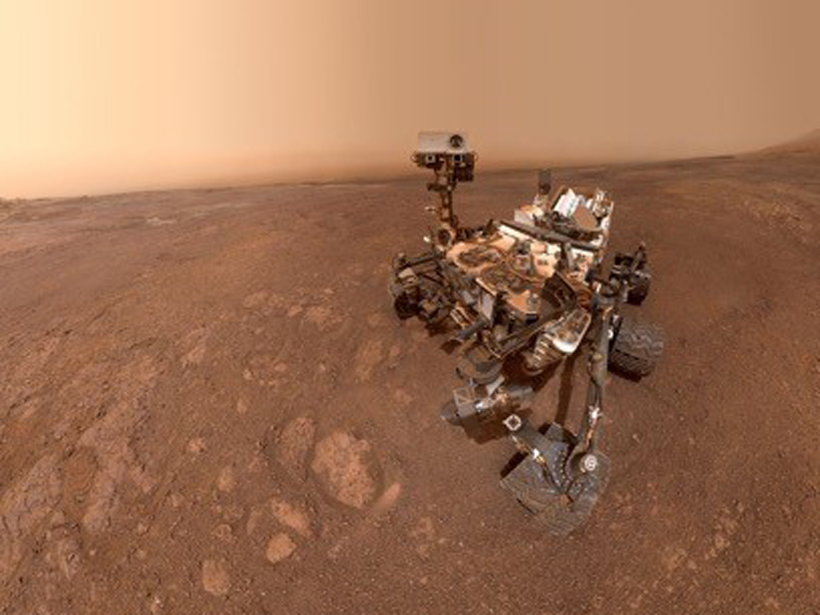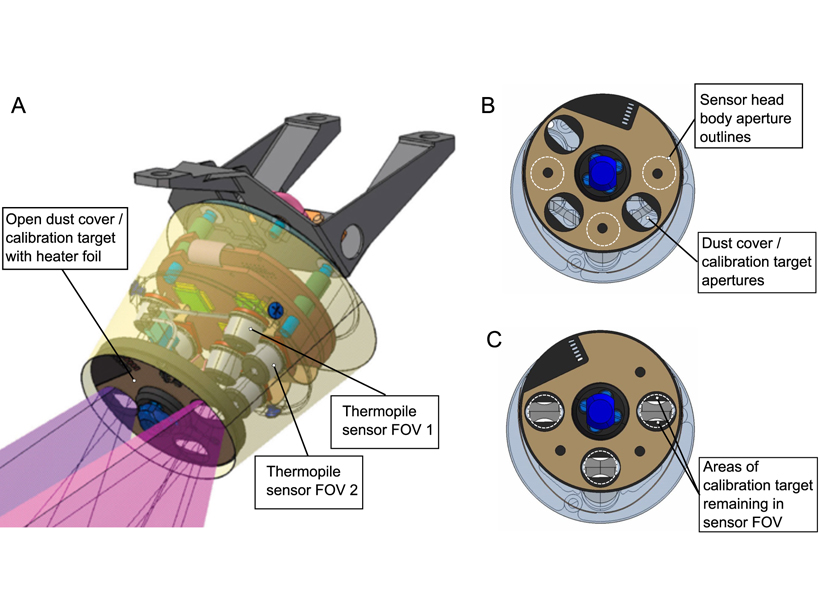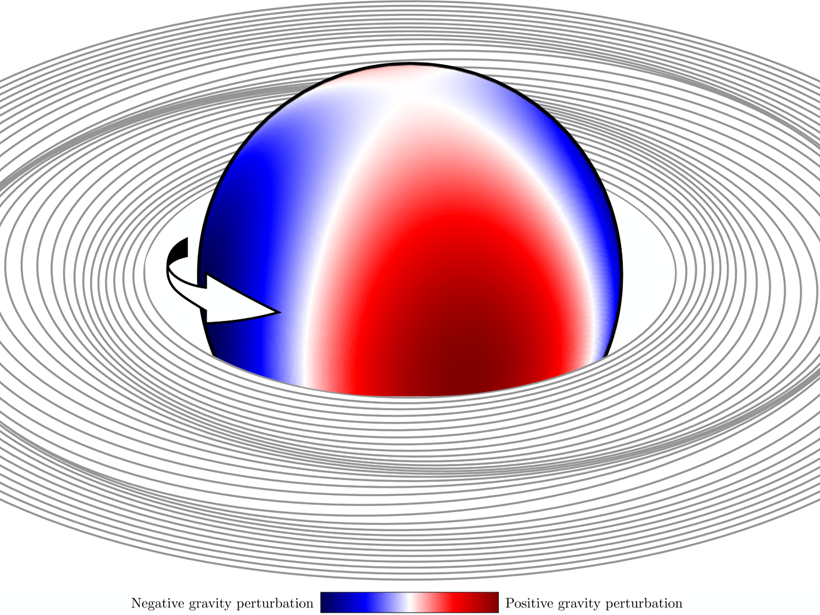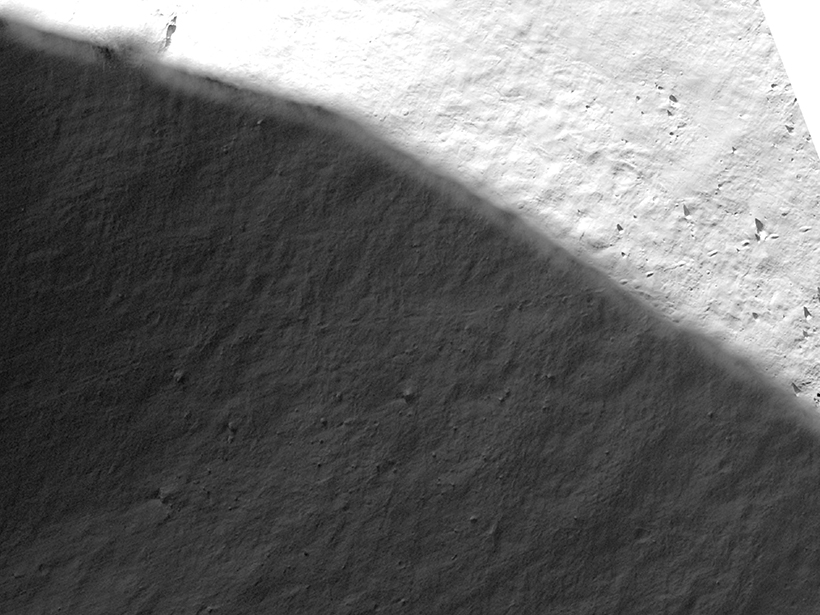Updating a model developed during the Voyager flybys will enable better mission planning and a deeper understanding of Juno data.
spacecraft
Terrestrial Radio Signals May Suppress High-Energy Electrons
Naval radio signals may cause the formation of a barrier observed during geomagnetic storms that is seemingly impenetrable by relativistic electrons.
A Whistle Here, There, and Everywhere on the Giant Planet
NASA’s Juno spacecraft is “hearing whistles” all over the place on Jupiter, a type of natural plasma waves called whistlers that are sometimes associated with atmospheric lightning.
Curiosity Solves the Mystery of Gale Crater’s Hematite Ridge
A new special issue of JGR: Planets details the water-rich history of a distinctive geomorphic feature on Mars dubbed Vera Rubin ridge, as investigated by the Curiosity rover.
Insights from Calibration of the HP³ Radiometer on InSight
A detailed analysis of Heatflow and Physical Properties Package Radiometer on the Mars InSight lander, including changing instrument sensitivity and calibration coefficients.
A Month of Milestones for Mars Missions
Mars launch season has arrived, and it brings the first space exploration mission from the Arab world, China’s first Mars landing, and the first powered flight on another planet.
Using Saturn’s Rings as a Seismometer
The Cassini spacecraft observed spiral density waves in the rings of Saturn which can be used to probe its interior structure and rotation.
“Electron Wings” Can Interfere with Spacecraft Measurements
Spacecraft sometimes produce a form of electrical self-interference as they zip through plasmas in space—a previously unreported effect that may be lurking in old data sets.
Shedding Light on the Darkest Regions of the Moon
An international team of researchers is analyzing boulder tracks to learn more about some of the most elusive regions on the Moon.
The Ice Giant Spacecraft of Our Dreams
Scientists imagined some innovative technologies that could enhance a future mission to Uranus or Neptune.

